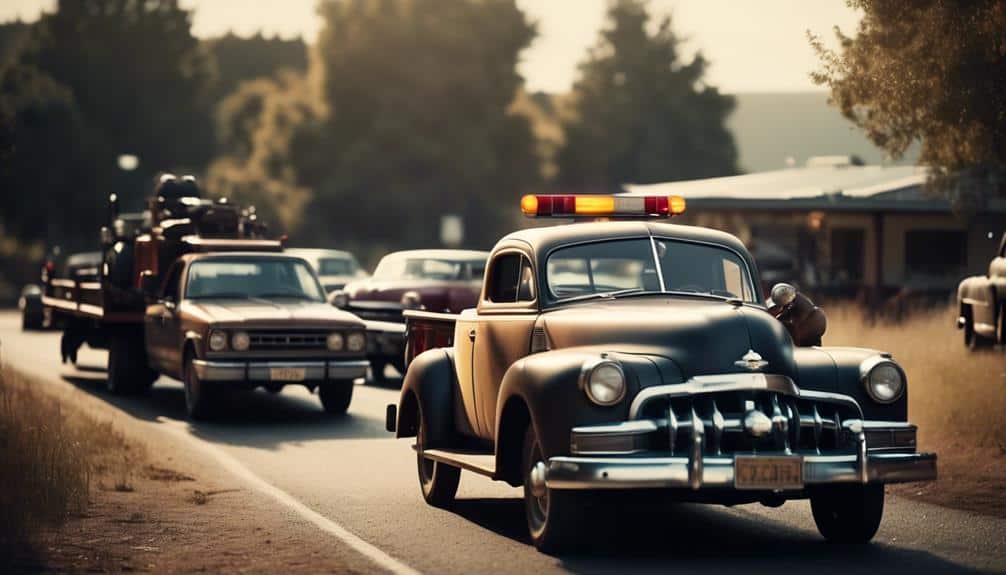
Roadside assistance has significantly shaped the landscape of vehicular travel, offering crucial support to motorists in times of need. This service, deeply rooted in the history of the automobile, has evolved from simple acts of courtesy among early motorists to a structured network of support that is both expected and essential in our contemporary driving experience.
Roadside assistance goes back to the advent of the automobile, a period marked by frequent mechanical breakdowns. Over the years, roadside assistance has been shaped by technological advancements, the expansion of road networks, and changes in consumer expectations, culminating in a multifaceted industry dedicated to the safety and convenience of drivers.
As we explore the layers of this industry’s development, we uncover the critical ways in which roadside assistance has not only reflected but also anticipated the needs of the motoring public. It has become a staple of the automotive world that continues to adapt to the ever-changing dynamics of travel and transportation.
Key Takeaways
- Various organizations provide roadside assistance services to assist motorists, motorcyclists, and bicyclists with mechanical failures.
- Roadside assistance originated from motoring clubs encouraging members to help each other and setting aside funds for tow trucks if needed.
- The American Automobile Association started the first roadside assistance service for the United States in April 1915, initially offering free minor repairs for stranded motorists.
- Roadside assistance includes services such as jump-starting vehicles, diagnosing and repairing problems, towing, changing flat tires, providing fuel, assisting in snow-related situations, and helping with car lockouts.
Origins of Roadside Help
Tracing the origins of roadside assistance reveals a history rooted in early motoring culture. Self-reliance was paramount, and fellow motorists often provided mutual aid during vehicle breakdowns.
As the use of automobiles increased, the need for organized support became evident. Motoring clubs arose, fostering a spirit of camaraderie among drivers. They encouraged members to assist one another and allocated resources for recovery services, including tow trucks.
In April 1915, the American Automobile Association (AAA) inaugurated the first structured roadside assistance program. They offered complimentary minor repairs to stranded drivers. This initiative marked the inception of a dedicated service that would evolve significantly with technological advancements.
One of the most significant technological advancements was the widespread adoption of mobile phones. This transformation revolutionized communication and response mechanisms for roadside emergencies.
Evolution of Assistance Services
Evolving alongside technological advancements and cultural shifts, roadside assistance services have significantly transformed from the early days of informal motorist aid to the modern comprehensive support systems we see today.
Initially, services were limited to basic mechanical repairs and towing, often managed through local motoring clubs and community efforts. As automobile usage surged, the demand for structured assistance grew, prompting the establishment of dedicated organizations like the American Automobile Association.
Modern roadside assistance has expanded to a vast array of services, including but not limited to vehicle jump-starts, flat tire changes, lockout assistance, and emergency fuel delivery. Integrating mobile technology has further streamlined service dispatch and communication, ensuring rapid and efficient assistance.
This evolutionary path reflects a commitment to adapting to evolving motorist needs and continuously pursuing enhanced service delivery.
Modern Assistance Models
Modern roadside assistance models have adapted to incorporate sophisticated technology and comprehensive service networks, offering a wide range of solutions to meet the diverse needs of today’s motorists.
Providers now leverage GPS and mobile applications to expedite service dispatch and improve accuracy in locating stranded vehicles.
Assistance extends beyond traditional services like towing and tire changes, including advanced diagnostics, on-site repairs, and even mobile charging for electric vehicles.
Insurance companies, automobile clubs, and car manufacturers often bundle these services with their products, enhancing consumers’ value and peace of mind.
Government-run patrols continue to play a vital role, offering free emergency aid and working with professional roadside assistance organizations to ensure a seamless response to vehicular incidents.
Common Assistance Offerings
Standard assistance offerings now include various services designed to address the immediate needs of motorists facing vehicular issues. These offerings are structured to alleviate the stress and potential hazards during a vehicle breakdown or accident.
Here are the primary services typically included:
- Towing Services: Safely transport disabled vehicles to a repair facility or designated location.
- Battery Jump-Start: Restarting a vehicle through battery jump-start procedures.
- Flat Tire Replacement: Replacement of flat tires with the spare or providing a temporary solution to mobilize the vehicle.
- Lockout Service: Help regain access to a vehicle when keys are lost, locked inside, or malfunctioning.
The goal of each service is the swift and efficient resolution of common roadside complications.
Roadside Support in America
In the United States, roadside support plays a crucial role in ensuring the safety and efficiency of travel by providing aid to motorists experiencing vehicle-related issues.
Government-run highway assistance patrols are prevalent, tasked with responding to emergency calls, securing accident scenes, and offering medical support. These patrols work with state police and highway operations departments to facilitate rapid assistance and traffic flow.
Roadside assistance services are also available through auto clubs, insurance policies, and dedicated providers. These services include vehicle jump-starts, towing, tire changes, fuel delivery, and lockout assistance.
With the evolution of mobile technology, motorists can quickly summon help via smartphone apps, enhancing the accessibility and response times of roadside support networks across America.
Mid-Columbia Insurance – Your Trusted Insurance Agent
Call (509)783-5600 and speak to one of our independent insurance agent professionals today, or click “Get a Quote” to request an insurance quote.
Get the coverage you want at a price you can afford!
« Back to Glossary Index